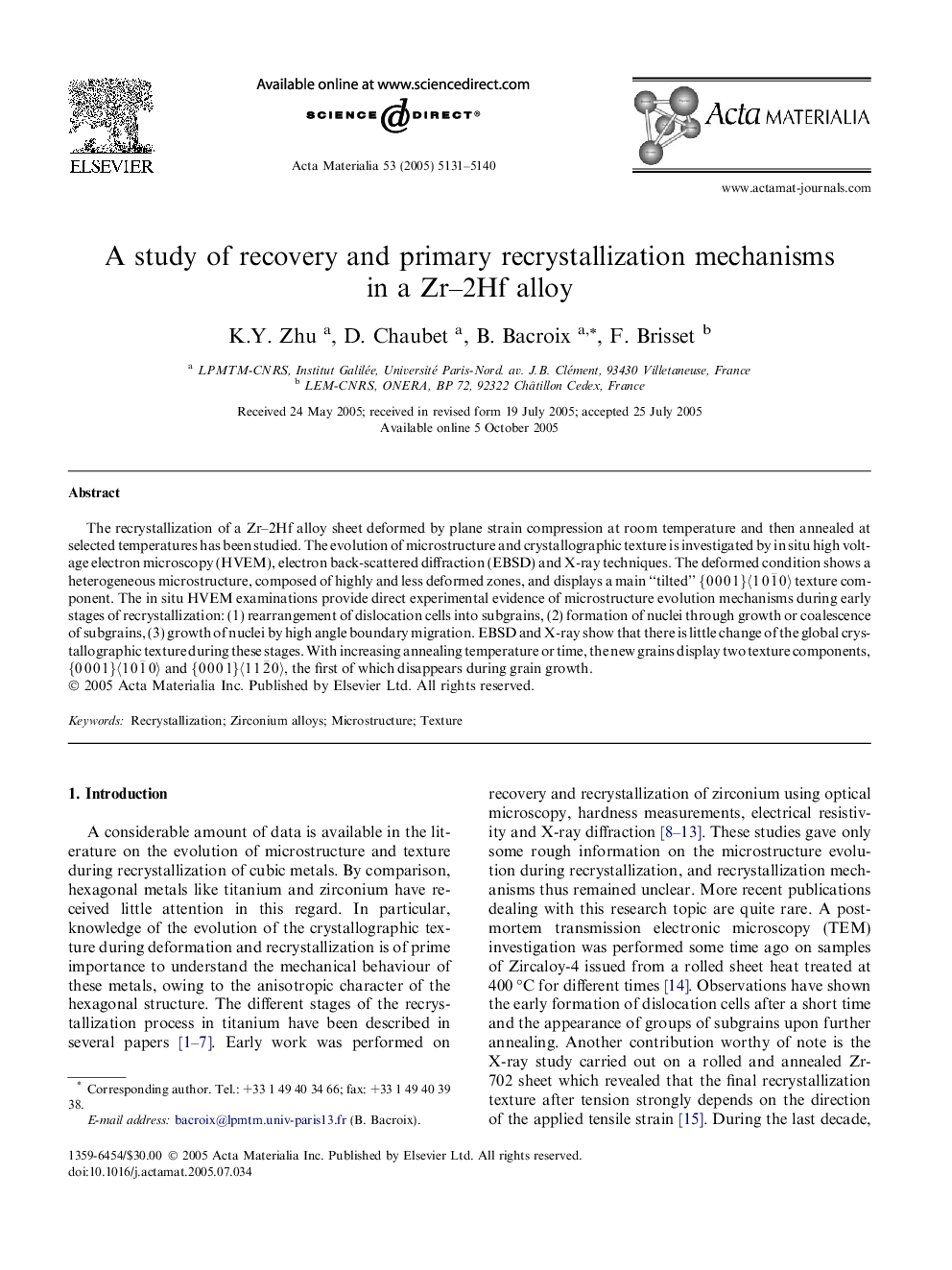| Article ID | Journal | Published Year | Pages | File Type |
|---|---|---|---|---|
| 1451301 | Acta Materialia | 2005 | 10 Pages |
The recrystallization of a Zr–2Hf alloy sheet deformed by plane strain compression at room temperature and then annealed at selected temperatures has been studied. The evolution of microstructure and crystallographic texture is investigated by in situ high voltage electron microscopy (HVEM), electron back-scattered diffraction (EBSD) and X-ray techniques. The deformed condition shows a heterogeneous microstructure, composed of highly and less deformed zones, and displays a main “tilted” {0001}〈101¯0〉 texture component. The in situ HVEM examinations provide direct experimental evidence of microstructure evolution mechanisms during early stages of recrystallization: (1) rearrangement of dislocation cells into subgrains, (2) formation of nuclei through growth or coalescence of subgrains, (3) growth of nuclei by high angle boundary migration. EBSD and X-ray show that there is little change of the global crystallographic texture during these stages. With increasing annealing temperature or time, the new grains display two texture components, {0001}〈101¯0〉 and {0001}〈112¯0〉, the first of which disappears during grain growth.
